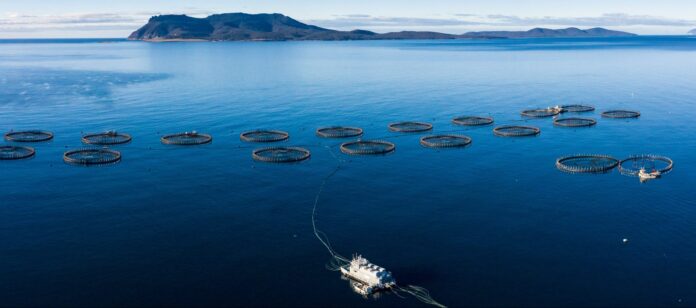The level of dissolved nitrogen in the water will now be the used as gauge to limit salmon production in Tasmania’s Macquarie Harbour after it was found that farmers were able to get around the standing biomass caps by changing their harvesting strategies.
Three major salmon producers – Tassal, Huon and Petuna – have leases in Macquarie Harbour.
Despite the farmers’ compliance to the biomass cap, Tasmania’s Environment Protection Authority said total production has increased.
“(Even with) the standing biomass being maintained, annual feed inputs have gradually increased since 2018,” EPA director Wes Ford told The Mercury. “This increase in feed appears to be due to a change in harvesting strategies in Macquarie Harbour, and has resulted in an increase in total annual production.”
Fish feed in the water increases dissolved nitrogen, which degrades water quality and sets off an adverse chain reaction in the ecosystem. In 2016, the rapid expansion of salmon farming was blamed for the “dead zones” in the Macquarie Harbour, a phenomenon caused by too much nutrients, such as nitrogen and phosphorus. That year, the biomass limit was reduced from 21,000 tonnes to the current 9,500 tonnes.
Salmon farmers will have to carefully manage how they feed their fish to comply with the new rules.
The total dissolved nitrogen limit for Macquarie Harbour will be 500.1 tonnes applicable for any rolling 12-month period from September 1 until August 31, 2027, the paper reported.
The environmental regulator will continue to monitor the environmental health of Macquarie Harbour to assess whether further reductions are required.

